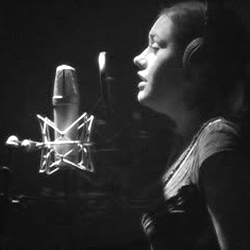Recording vocals can be extremely tricky even under the most perfect of circumstances.
However, as we well know, the perfect circumstances aren’t encountered by everyone from day to day.
So here are a few tips to keep in mind when you’re tackling that next vocal session.
Try Isolation
Many studios don’t have a dedicated vocal booth, or simply don’t have the space for one.
The next best thing is some acoustic treatment that surrounds the mic such as the VoxGuard or an SE reflexion filter. These help reduce the sound of the room in the mic, getting you closer to that tight, dry vocal booth sound and quite affordably.
Always Use A Pop Filter
A pop filter is absolutely an essential tool for vocal recording. It doesn’t look like much but is very effective at stopping blasts of air from distorting or even damaging the mic.
For the pop filter to be effective, it needs to be at least a few inches away from the mic. The technical reason for this is turbulence, because it takes some space for the turbulence to dissipate after the air hits the filter.
Use The Right Headphones
The best headphones to use for vocals are circumaural (or around the ear) and closed-back. Why? Very simply, it’s because of isolation.
This design blocks outside noise, and let’s you listen as loud as you want without the music leaking into the mic. Semi-open headphones can be used but watch out for sound leakage.
Choose The Right Mic
I know, I know, this is easier said than done. However, there’s an easy way to determine the best tool for the job. Set up all your mics and record a few phrases with each one (a shootout, if you will).
Listen back and decide which one has the best tonal balance and least sibilance. You may be surprised that your most expensive mic isn’t always the best mic for a particular song.
Taking some time to experiment and choose the best of what you have is well worth it, also allows the singer to warm up a little.
Find The Appropriate Distance
A singer who is basically swallowing a microphone can sound cool, but it can also sound unnatural. The further away (within reason) the vocalist is from the microphone, the better the tonal balance the mic will have. A good starting point for balance is 12-24 inches away from the microphone.
The further back the singer is the less drastic tiny changes in angle and distance are compared to a few inches away. This can help the singer because he/she doesn’t have to worry about staying in precisely the same position while singing, so moving around a little is OK.
Jon Tidey is a Producer / Engineer who runs his own studio, EPIC Sounds, and enjoys writing about audio on his blog AudioGeekZine.com. To comment and ask questions about this article go here.





















